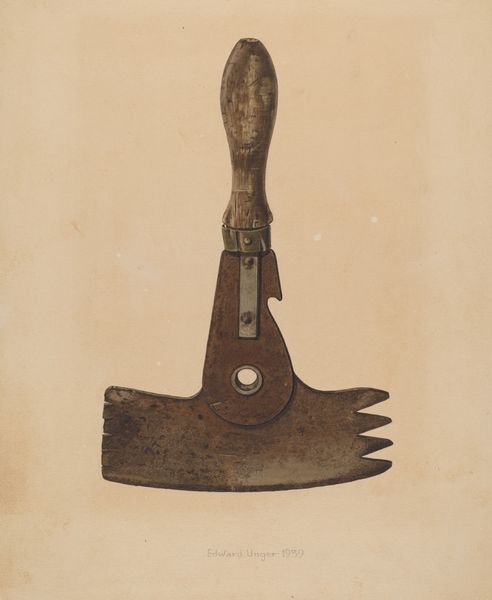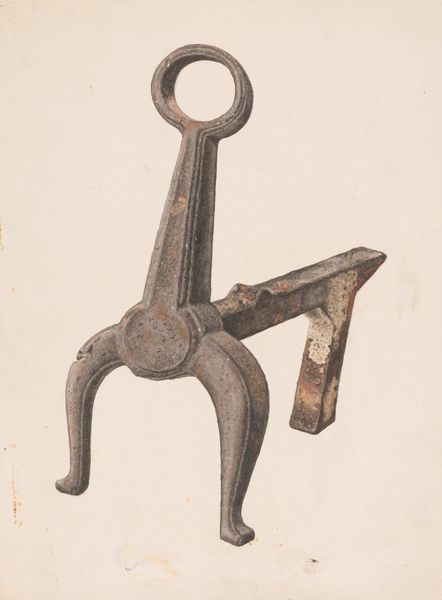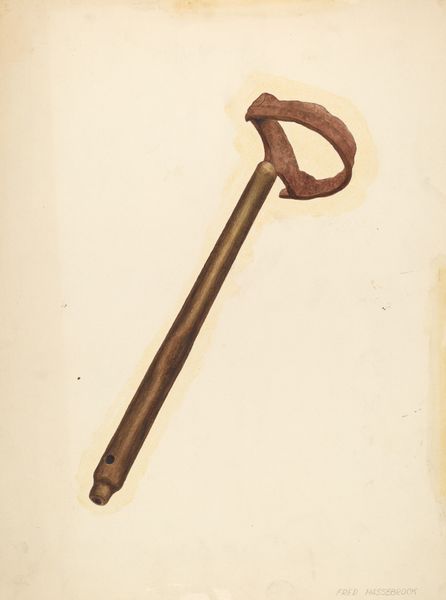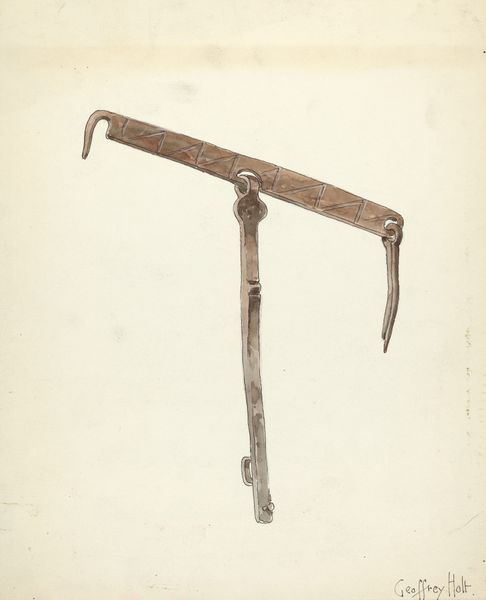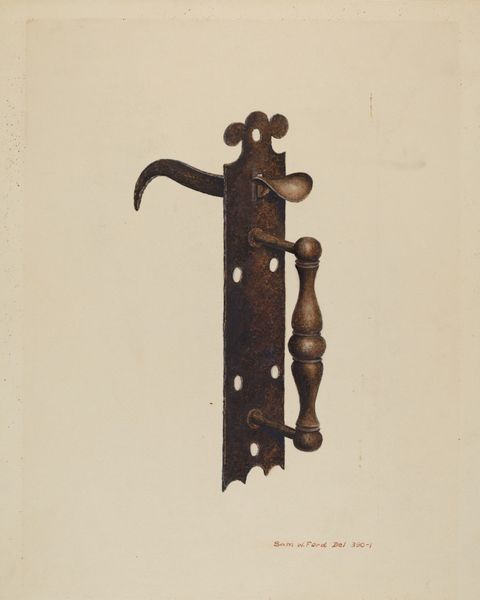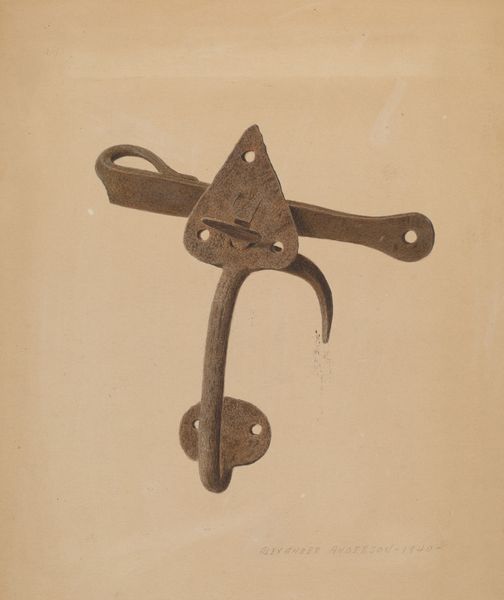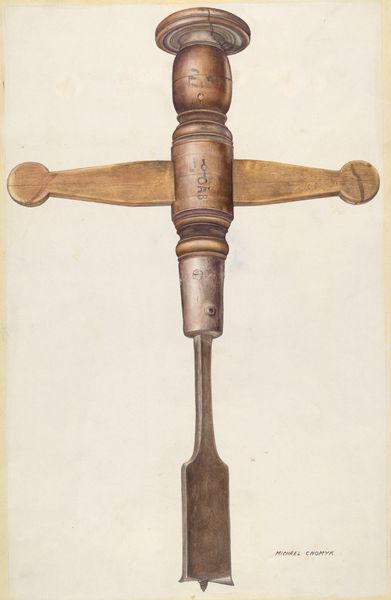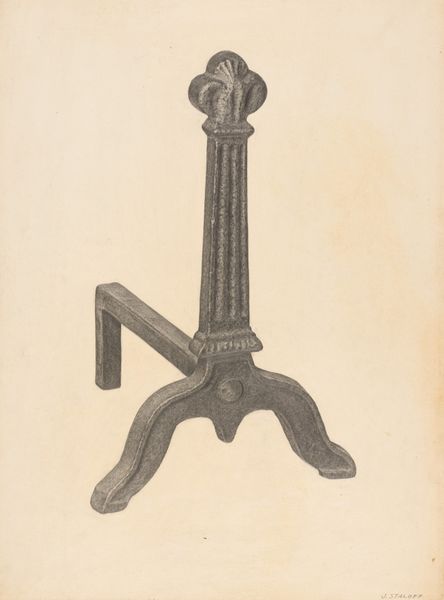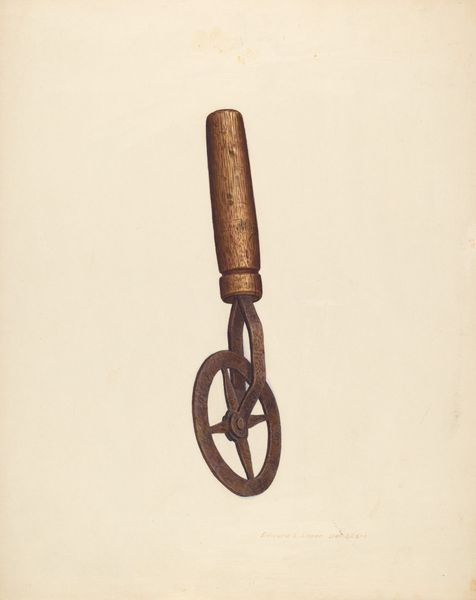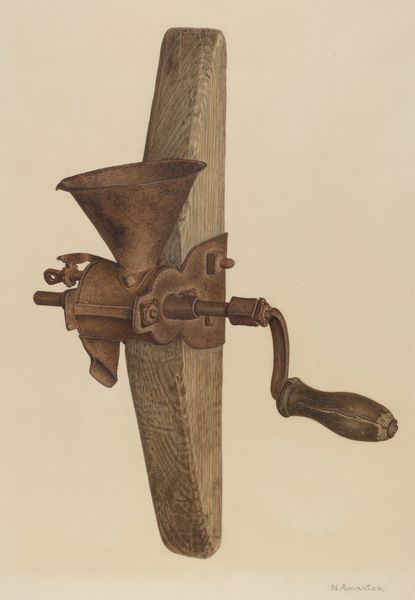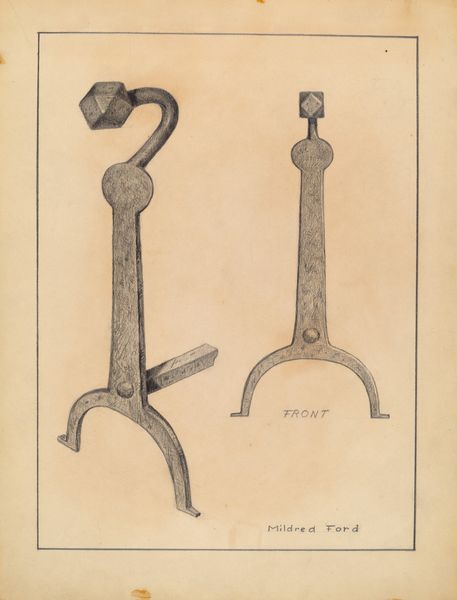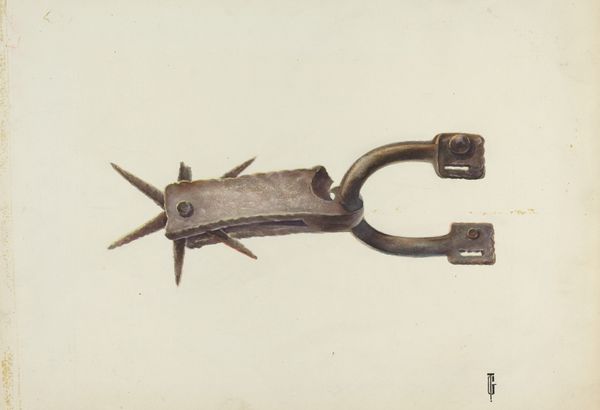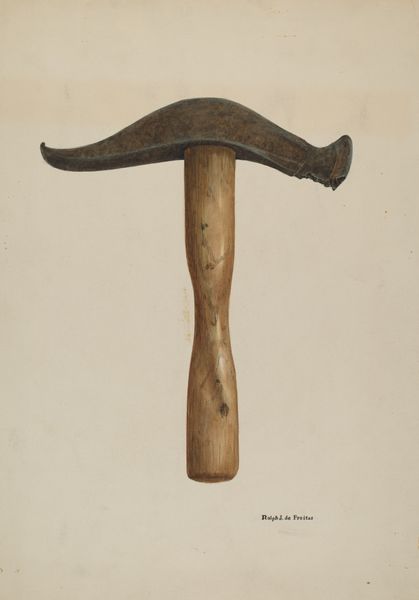
drawing, watercolor
#
drawing
#
charcoal drawing
#
watercolor
#
watercolor
#
realism
Dimensions: overall: 29.6 x 21.9 cm (11 5/8 x 8 5/8 in.) Original IAD Object: Handle: 5" long, 2" from door plane; Keyhole Plate: 6" long; inside door: 4 2/16 high, 4 1/2 wide and 2" deep.
Copyright: National Gallery of Art: CC0 1.0
Curator: Welcome. Let's explore this arresting drawing. Crafted around 1937 by Earl Butlin, it’s rendered in watercolor and charcoal and titled "Metal Door Lock". Editor: Immediately, there’s a haunting stillness here. It’s a very isolated image – just a lock on what seems to be bare paper. There's something ominous about this mundane object captured in such stark detail. Curator: It's compelling how Butlin isolates an everyday object, drawing attention to its design, even celebrating its functionality through realism. Consider, however, that this period saw widespread labor unrest and anxieties about industrialization. Is Butlin suggesting something more? Is he asking us to reconsider our relationship to tools and technology, perhaps the way they lock us in, not out? Editor: Definitely a darker reading possible there. From an iconographic perspective, the lock, especially with that shadowed keyhole, often represents secrets, access, but also restriction and prevention. The cool tones of the metal only enhance that sense of coldness and impenetrability. Is this about guarding a secret or about feeling shut out? Curator: Those are useful entry points. This work comes at a time when abstraction was ascendant, especially in Europe. By turning his attention to a humdrum lock, perhaps Butlin comments on artistic movements. Where are the doors to this metal door? What context has he eliminated that now we must rebuild? Does this lack of context highlight isolation? Editor: And isn't it intriguing that it's a lock of an older design? The style feels dated, maybe intentionally so. The shape is almost archaic, echoing historical metalwork. Perhaps there's a reflection on the past. Old methods and meanings. Curator: Interesting, and perhaps, given the rising concerns about social control during this pre-war period, a subtle nod to more established and perhaps oppressive societal structures. By presenting this antique image, he’s subtly positioning its meaning relative to the social dynamics. Editor: I agree! I’m especially drawn to the textures captured so realistically—the wear, the slight rust—each adding a layer of narrative weight. The symbolic richness elevates the artwork past pure realism, it becomes almost totemic. Curator: A fantastic consideration that acknowledges Butlin's layered artistic vision that is informed by realism yet speaks so richly about the historical period that formed its own aesthetic context. Editor: Agreed, leaving me with a slightly unsettled yet profoundly contemplative mood.
Comments
No comments
Be the first to comment and join the conversation on the ultimate creative platform.
